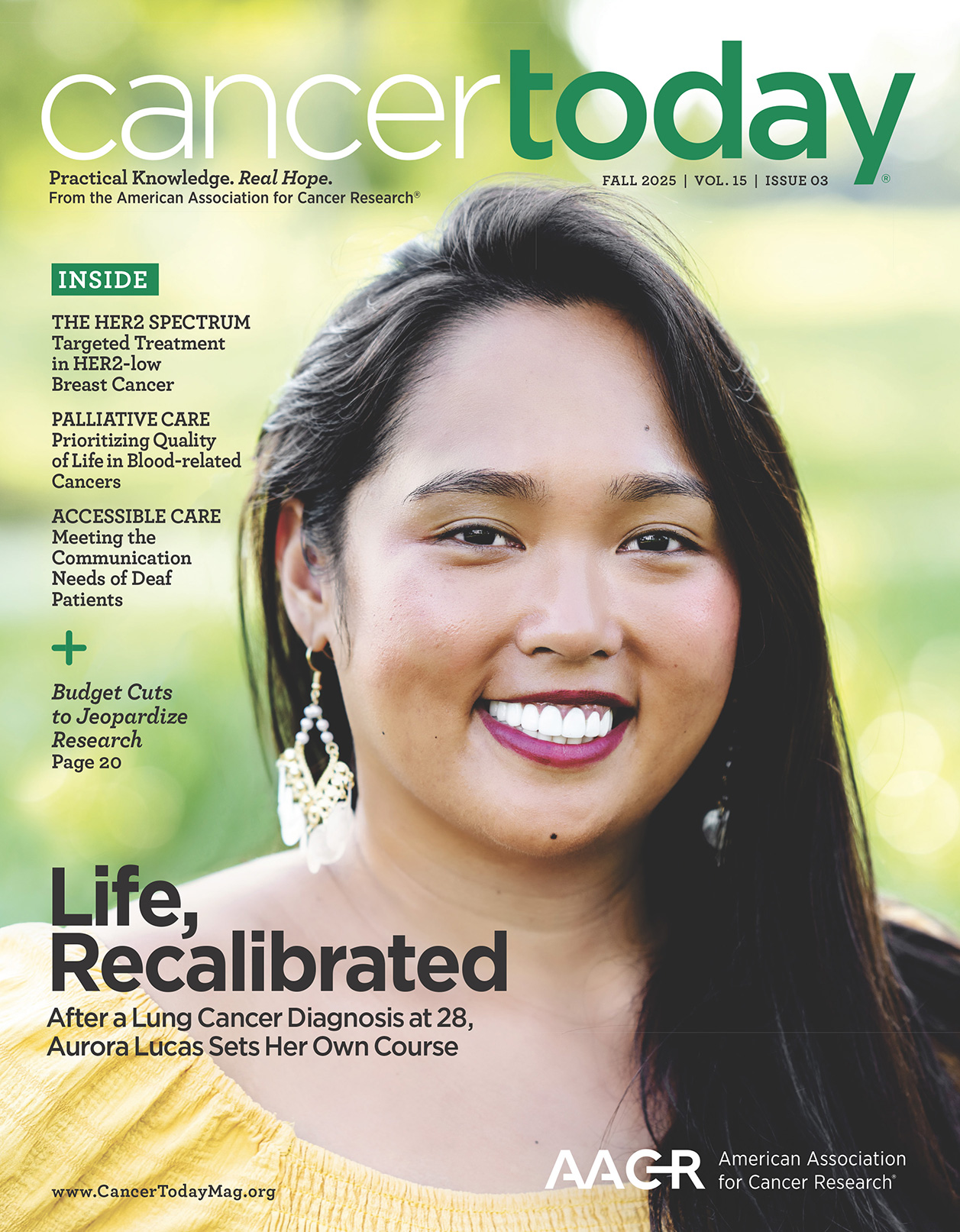BREAST CANCER DEATH RATES declined dramatically between 2010 and 2020 for U.S. women ages 20 to 49, according to a study presented at the American Association for Cancer Research (AACR) Annual Meeting 2025 in Chicago. (The AACR publishes Cancer Today.)
Using breast cancer data from the National Cancer Institute’s Surveillance, Epidemiology, and End Results (SEER) program, researchers analyzed 11,661 breast cancer deaths in the decade between 2010 and 2020. They found that the rate of incidence-based mortality, a measure that prevents misclassifying breast cancer as the cause of death, dropped from 9.7 deaths per 100,000 women in 2010 to 1.47 per 100,000 in 2020, with a more rapid decline since 2016, from 6.76 deaths to 1.47 per 100,000. This downward trend has occurred as breast cancer cases were rising. A study published last year in JAMA Network Open showed breast cancer incidence among women 20 to 49 increased from 2000 to 2019.
“We believe that understanding the incidence of mortality will allow us to evaluate the progress we have made in breast cancer management and inform where can direct resources” to reduce the burden of cancer, said Adetunji Toriola, a surgeon and professor in the Department of Surgery and Division of Public Health Sciences and Siteman Cancer Center at Washington University School of Medicine in St. Louis, who presented the findings.
Trends in Breast Cancer Mortality
The study reported different death rates based on age, race and the molecular profile of the breast cancer. Women 20 to 39 had a lower 10-year survival rate (78.5%) than women 40 to 49 (87.6%). Looking at race and ethnicity, the study found Black and Hispanic women had the lowest 10-year survival rates (75.5% and 81.7%, respectively), while white (88%) and Asian/Pacific Islander (88.2%) women had the highest rates of survival.
“We have made tremendous advances in reducing mortality from breast cancer in young women but there are still opportunities for improvements, especially in relation to eliminating disparities,” Toriola said in a press release.
Among women 40 to 49, those with the molecular subtype luminal A, considered a less aggressive cancer, had the highest 10-year relative survival rate (89.8%) compared with triple-negative breast cancer (TNBC), which had the lowest survival at 74.6%. But among women 20 to 39, relative survival for women with luminal A was 78.3%, which was higher than TNBC (72.8%) but lower than the rates for women with luminal B and HER2-enriched molecular subtypes.
“This was unexpected as luminal A is generally the least aggressive subtype with the most favorable prognosis,” Toriola said in the release. “This requires confirmation in other studies but may suggest that luminal A tumors in women ages 20-39 may represent a more biologically heterogeneous and potentially aggressive subgroup.”
Toriola credited the declines in mortality, especially since 2016, to wider access to breast cancer screening and better treatments.
“We must continue to perform impactful research to ensure further reduction in breast cancer mortality, including research into understanding the tumor biology and molecular mechanisms driving carcinogenesis and treatment response in younger women,” Toriola said. “Additionally, we must encourage and provide access to population-based screening in women ages 40-49 and targeted screening in younger high-risk women, and advocate for access to high-quality treatment and care for all women.”
Cancer Today magazine is free to cancer patients, survivors and caregivers who live in the U.S. Subscribe here to receive four issues per year.





